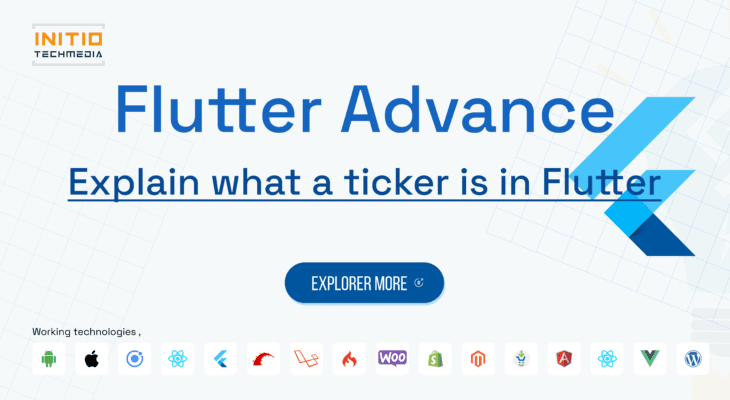
Explain what a ticker is in Flutter.
- payal patel
- May 23, 2023
- 0
In the context of Flutter, a ticker refers to an animation controller provided by the Flutter framework. It is a crucial component for managing animations within a Flutter application.
Animations in Flutter are typically driven by the hardware or software refresh rate of the device. To synchronize animations with the device’s refresh rate, Flutter uses a ticker system. The ticker system notifies the application when it’s time to update the UI for the next frame.
A ticker is represented by the Ticker class in Flutter. It is created using an animation controller, which is an instance of the AnimationController class. The animation controller defines the duration, curve, and other parameters of an animation.
Once you have an animation controller, you can create a ticker by calling its vsync parameter with an instance of TickerProvider. The TickerProvider typically refers to the widget that creates and manages the ticker. It ensures that the ticker is only active when the widget is visible on the screen, conserving system resources.
Here’s an example of how you can create a ticker using an animation controller:
class MyWidget extends StatefulWidget {
@override
_MyWidgetState createState() => _MyWidgetState();
}
class _MyWidgetState extends State<MyWidget> with SingleTickerProviderStateMixin
{
AnimationController _controller;Ticker _ticker;
@override
void initState()
{
super.initState();
_controller = AnimationController(
duration: const Duration(seconds: 1),
vsync: this, // `this` refers to the current widget as the `TickerProvider`
);
_ticker = _controller.createTicker((_) => setState(() {})); // Calls `setState` to update the UI for each tick
_ticker.start(); // Starts the ticker
}
@override
void dispose()
{
_ticker.dispose(); // Disposes the ticker when it’s no longer needed
_controller.dispose(); // Disposes the animation controller
super.dispose();
}
@override
Widget build(BuildContext context) {
// Widget rendering and UI logic
}
}
In this example, _MyWidgetState extends State<MyWidget> and mixes in SingleTickerProviderStateMixin. This mixin provides the necessary vsync implementation to make the widget a TickerProvider. The initState method initializes the animation controller and creates a ticker using _controller.createTicker. The ticker’s callback updates the UI by calling setState on each tick. Finally, the dispose method disposes of the ticker and animation controller to clean up resources when the widget is removed from the widget tree.
By using tickers and animation controllers in Flutter, you can create and manage smooth, synchronized animations in your application.

